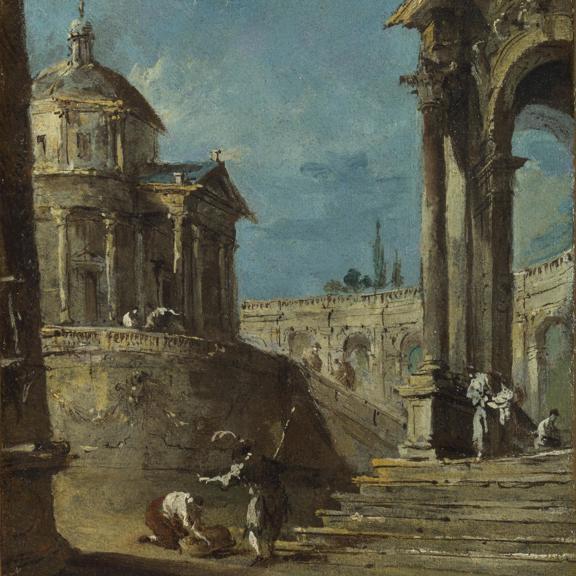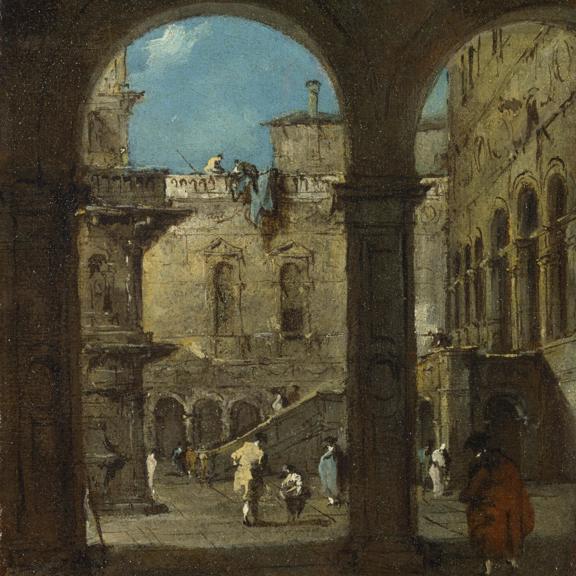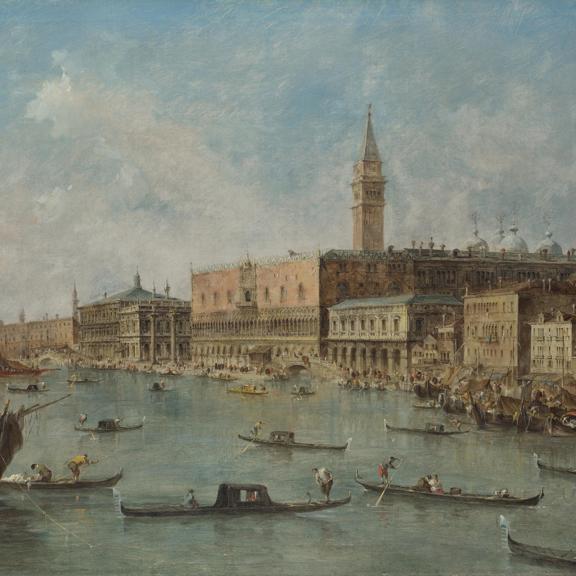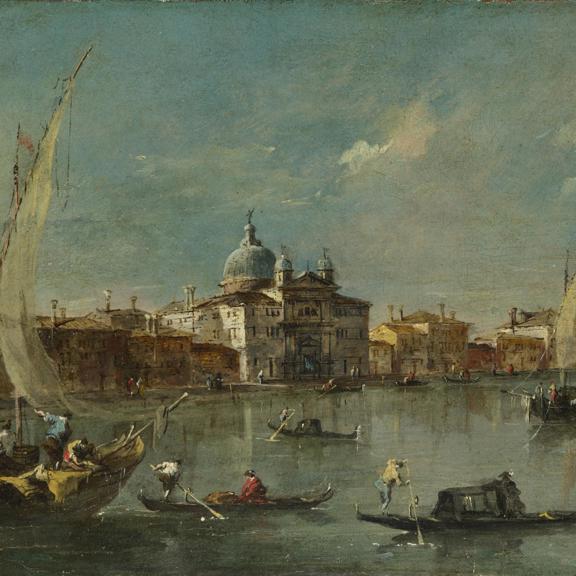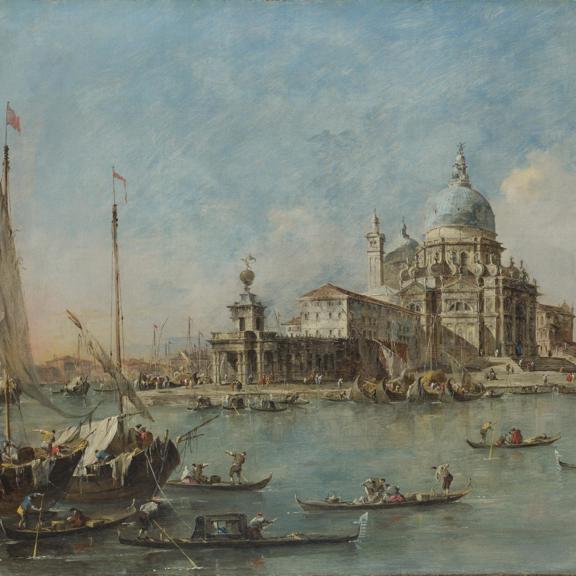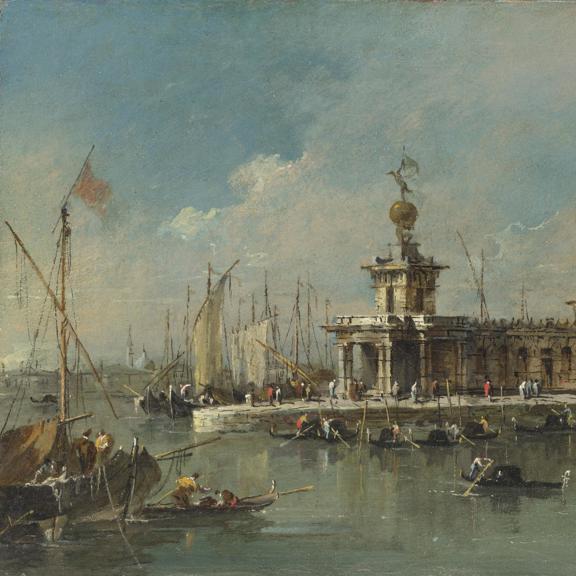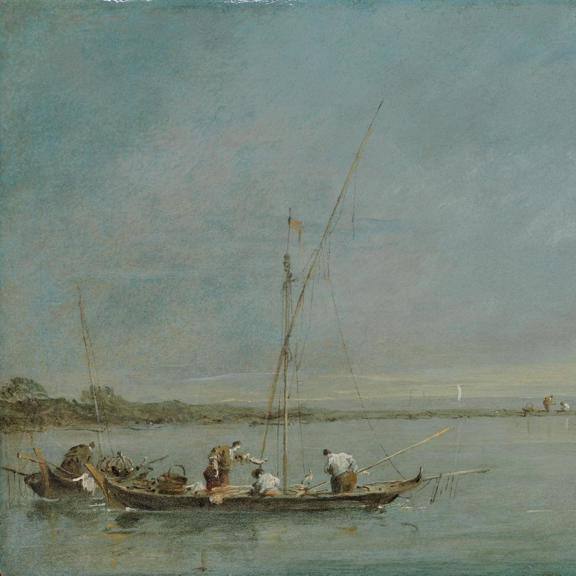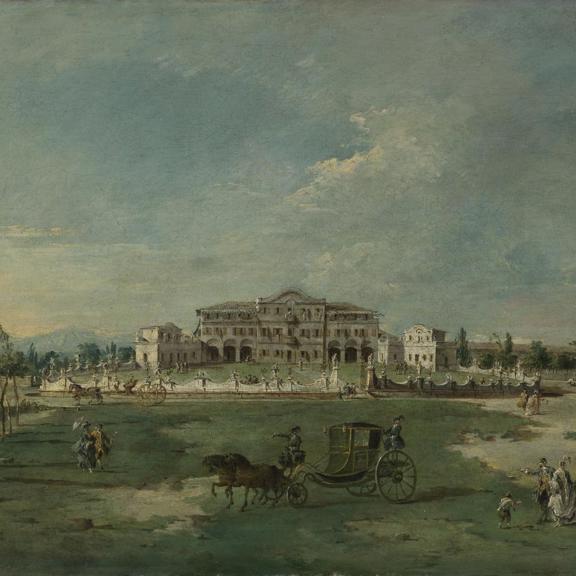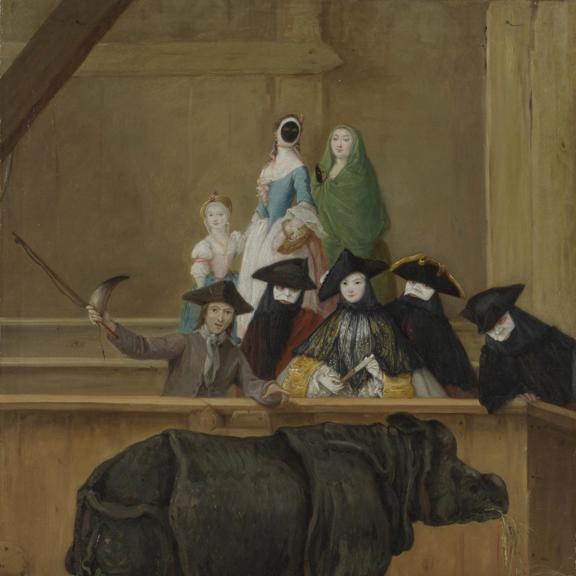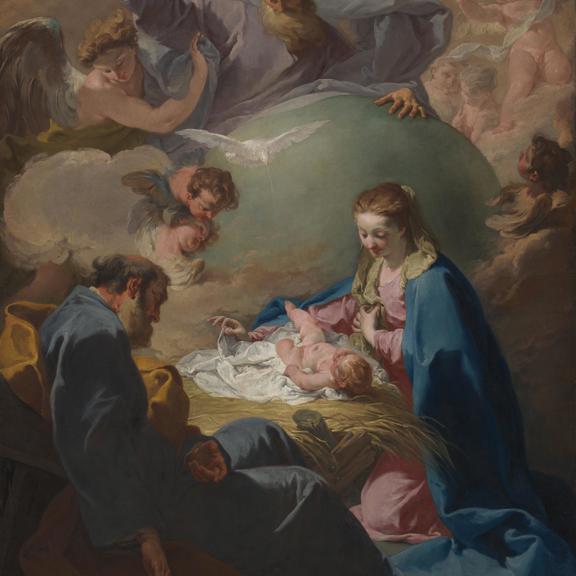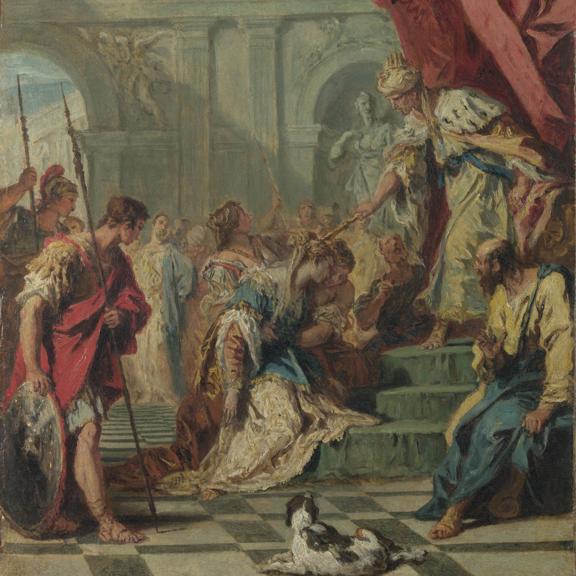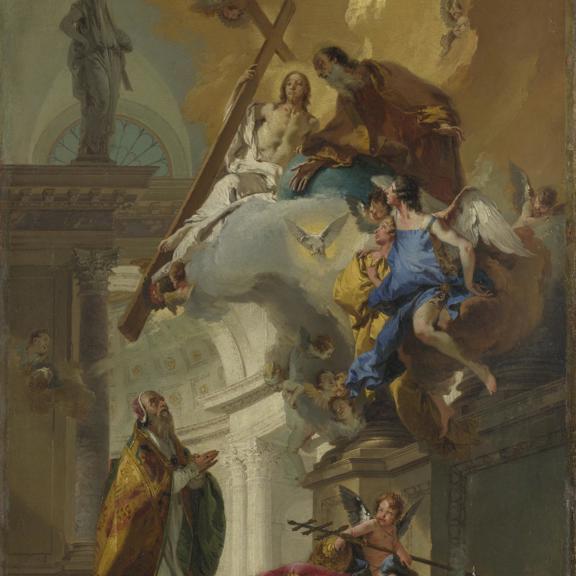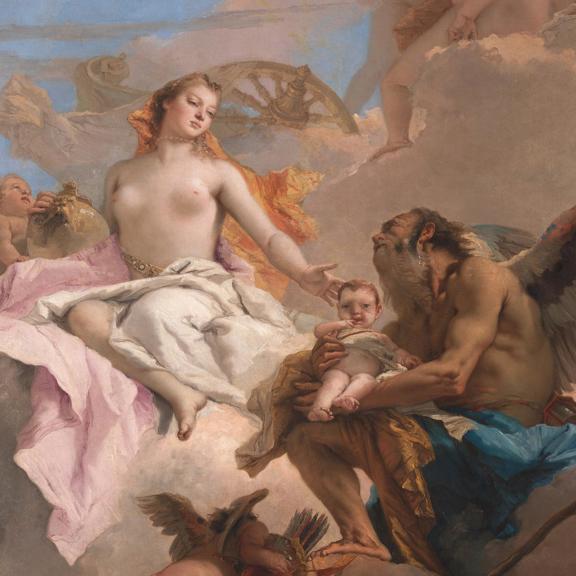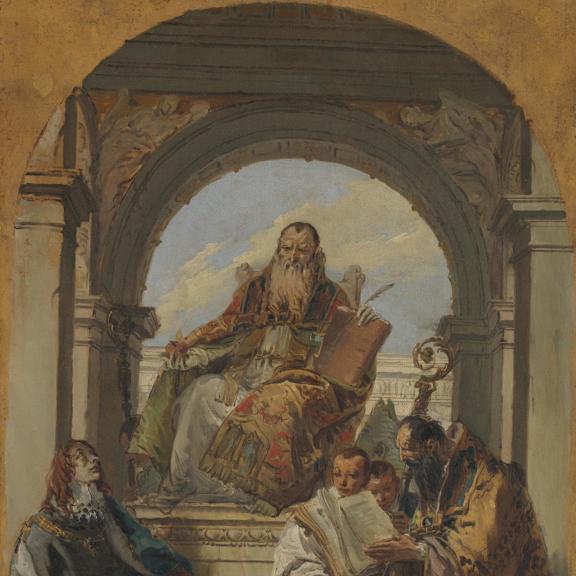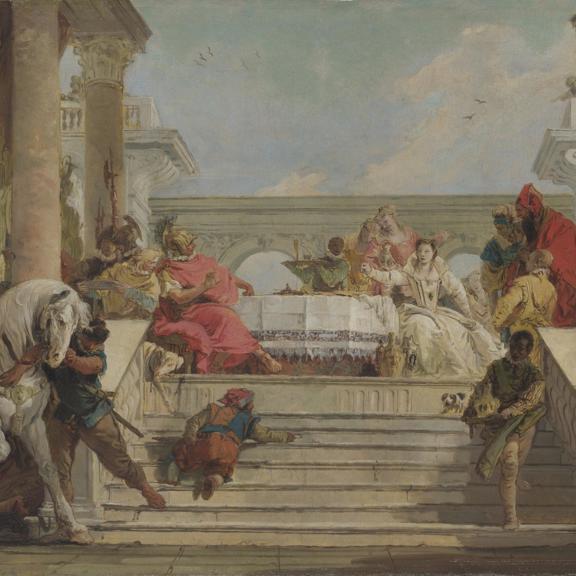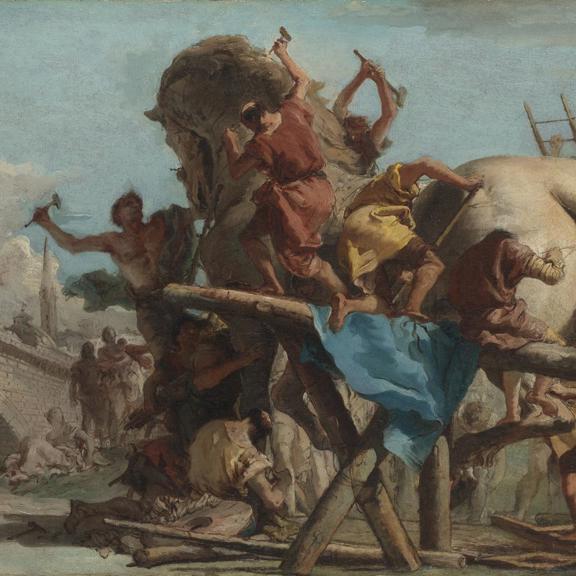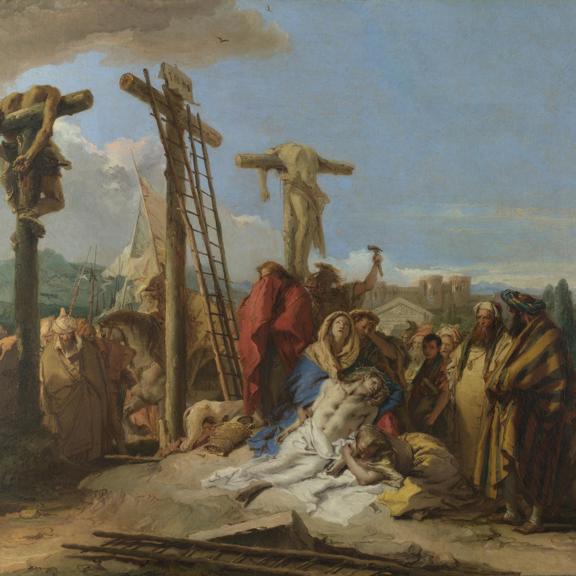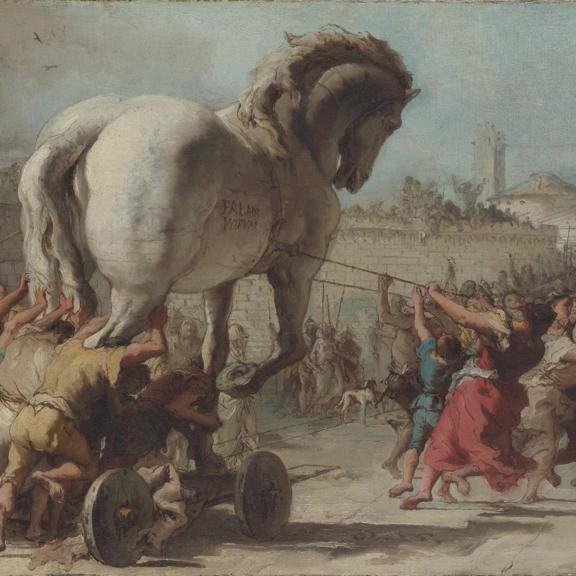Although no longer the powerful maritime empire it had been in previous centuries, Venice remained a prosperous trading place and a centre for the visual arts until the decline of the Venetian Republic at the end of the 18th century.
Canaletto became the most sought-after painter of Venetian views, capturing the spirit of the city in his evocative paintings. Canaletto’s successor in Venice, Francesco Guardi, brought a greater range of expression to view painting, stressing the atmospheric play of light and the frenetic activity of the city with elegant, free brushwork.
Giovanni Battista Tiepolo initiated a second renaissance in Venetian art with his bright and vibrant colours: his imaginative frescoes and canvases became the new fashion for the decoration of the many palaces, churches and villas. Giovanni Battista Pittoni was one of the painters deeply affected by the work of Tiepolo and, through his many commissions from abroad, Pittoni played an important role in the international success of the Venetian Rococo style.


